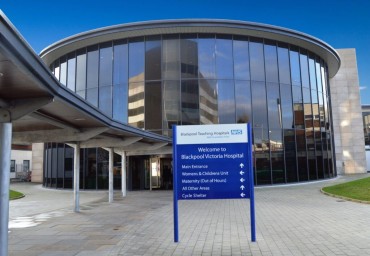All wards in the Lancashire Cardiac Centre are dedicated to patients with heart conditions, so you can be assured that all the staff involved in your care are enthusiastic and experienced in cardiac disciplines. Your care plan will be detailed to your specific needs and you will be involved wherever possible. To respect patient’s privacy, religious and personal beliefs, patients will stay in same sex bays while on the ward and sometimes single rooms depending on circumstances.
Everybody’s stay in hospital can be unique, different types of procedures, different types of patients. To keep things easier our wards are split into cardiac and cardiothoracic (heart and lung). Information and visiting times on each ward can found under ‘Visiting Hours’.
We’ve included details on what to expect depending on whether your route is surgical therapy or cardiac catheter laboratory based and also details about the tests you may have.
Surgical procedures include: coronary artery bypass surgery, value repair / replacement, surgery to the aorta, surgery to the lungs, surgery to the oesophagus.
Cardiac catheter laboratory procedures include: coronary angiography / angioplasty, internal cardioversions, pacemaker / internal cardio-defibrillators implantation.
The Lancashire Cardiac Centre is situated on the Blackpool Victoria Hospital site on Whinney Heys Road, next to Blackpool Zoo.
There are a number of ways to get to the centre. Detailed travel information, including a site map, is available on the Trust website.
By Car
From the Motorway:
Car travellers coming from Junction 4 of the M55 should head towards North Shore and follow signs for Stanley Park and Blackpool Zoo. The hospital site entrance is the first right turn at traffic lights after Blackpool Zoo. The Lancashire Cardiac Centre is situated on the hospital ring road. There is a car park adjacent to the Centre although spaces are limited at peak times. Other car parks are indicated on the Trust site map.
Travelling from Thornton / Cleveleys:
Car travellers coming from the Four Lane Ends Roundabout near the hospital should travel down Whinney Heys Road to the mini roundabout. To get to the largest hospital car park turn left at the mini roundabout and then left again. The Cardiac Centre is signposted nearby. To park in the Centre car park, turn left at the roundabout and head onto the link road.
By Rail
Rail users may travel to nearby Layton or Blackpool North Stations, both of which are main line stations operating regular services around the North West. For more information about rail travel please contact National Rail Enquires on 08457 484950.
By Bus
The Centre is also well served by regular bus services to and from Blackpool. For timetable information about Bus Services across the Fylde Coast, please call 01253 473000. Local travel sites can also be accessed from the Trust’s travel website.
By Bike
There is also direct access to the Cardiac Centre from the National Cycle Network (NCN 62) which runs alongside the hospital site.
Outpatients
Monday – Friday 8.45am – 5pm
Cardiac Investigations Unit
Monday – Friday 8.45am – 5pm
Cardiac Day Case Unit (CDCU)
Monday – Sunday 2.30pm – 3:30pm, 7pm – 8pm
Lancashire Suite
Tel: 657861 / 657862
Private Ward 24hr
Monday – Sunday 2pm – 4pm, 6pm – 8pm
Ward 37
Tel: 657737
Monday – Sunday 2.30pm – 3.30pm, 7pm – 8pm
Ward 38
Tel: 657738
Monday – Sunday 2.30pm – 3.30pm, 7pm – 8pm
Ward 39
Tel: 657746
Monday – Sunday 2.30pm – 3.30pm, 7pm – 8pm
Coronary Care Unit (CCU)
Tel: 657863
24hr Ward
Monday – Sunday 2.pm – 3.30pm, 7pm – 8pm
Cardiac Intensive Care Unit (CITU)
Tel: 657770
24hr Ward
Monday – Sunday 2.30pm – 3.30pm, 6pm – 7pm
Cardiac Theatres
Monday – Friday Operate 24 hours including emergency patients
Cardiac Catheter Laboratories
Monday – Friday Operate 24 hours including emergency patients

The heart has four chambers – two on the left side and two on the right. The two top chambers are called the atria, and the two lower chambers are called the ventricles. The left and the right sides of the heart are separated by a muscular wall called the septum
Each chamber has valves to ensure that blood only passes one way through the heart. The heart diagram below shows the names of the different parts and the arrows show the direction of blood flow.



